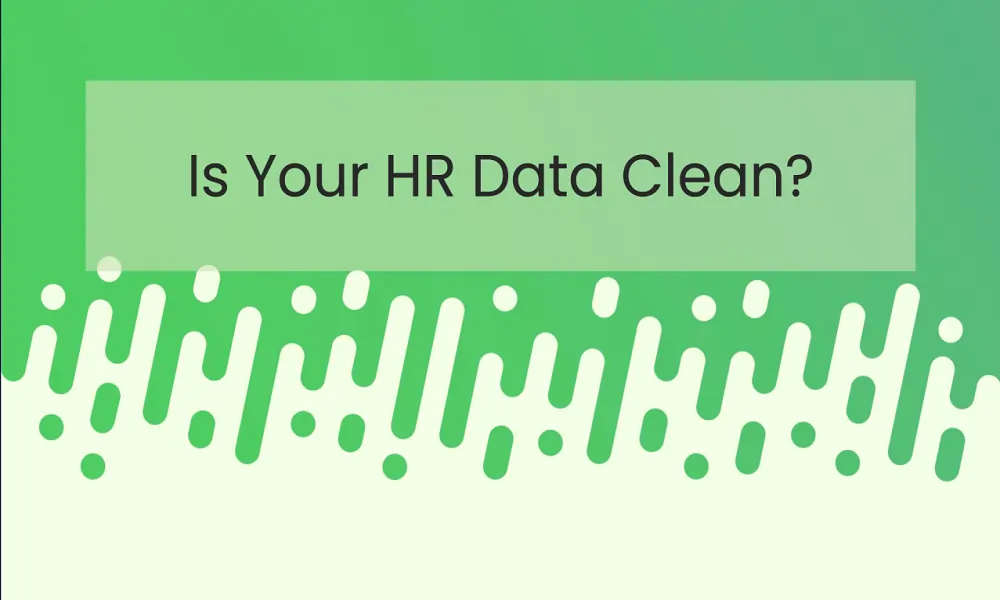It’s a boring topic. Really dry, and the basic premise hasn’t changed in decades: rules, rules, rules, and more rules. So why are we at Talenode tackling something that’s not only dull but also unlikely to grab eyeballs?
Because the biggest challenge behind it is maintaining strong data quality and visibility — an area where Data Observability has become crucial for modern HR systems.
Because it’s a topic that governs so much of HR tech, and there is no solution in the market that adequately solves for it.
Ask anyone who works with HR data, and they’ll tell you about their love-hate relationship with it. HR data cleaning teaches a lot but is also a source of ongoing frustration. Updating, correcting, replacing, and endlessly reworking data through complex data cleaning processes can make anyone boil over. Yet, when that pristine, clean dataset is finally ready, it feels like something worth protecting. Unfortunately, as soon as it’s out in the real world, it gets corrupted, changed, and modified all over again. In weeks or months, it’s often unrecognizable due to poor data governance and inconsistent management practices.
Our Journey with Data Cleaning
Ankit Abrol and I have spent years navigating the highs and lows of data cleaning. From manually managing spreadsheets with Excel macros and formulas during consulting projects to addressing the never-ending chaos of line HR operations, we’ve seen it all.
In consulting, cleaning data for a specific project is still manageable; there is a clear start and endpoint. But in HR operations, maintaining clean data is a constant battle. Major reorgs, RIFs (reductions in force), mergers and acquisitions, or even unforeseen events such as COVID-19 can disrupt the system overnight.
We’ve tried countless approaches and data cleaning methods to manage this chaos, from point-in-time fixes to time-over-time data strategies. Some solutions worked well for event-based management, while others helped us apply validation rules faster. Over time, we realized that keeping data updated in real-time across multiple systems is an uphill climb, especially when resources, experience, and tech support are limited.
That’s when we recognized the importance of Data Observability in sustaining data quality — ensuring every data change across platforms stays accurate, traceable, and reliable over time.
No single data cleaning solution addressed everything, so we had to evolve.
HRMS: The Source of Truth and Challenges
To illustrate the complexities of data cleaning, let’s look at HRMS platforms such as SuccessFactors and Workday, which serve as the source of truth for employee information. Even within one system, there are plenty of challenges. For simplicity, this article focuses on point-in-time data across an HRMS (future articles will dive into time-over-time and multi-system data).
Here are the key questions we’ve faced—and how we’re tackling them:
1. What Columns to Review?
Not everyone needs to see every column of data:
- HRBPs focus on job relationships (manager and leader tagging) and org structure.
- Total Rewards teams care about compensation and benefits data.
- HR Operations reviews lifecycle and personal data.
Our Approach: Customize error visibility by stakeholder role so each group sees only what’s relevant to them.
2. What Rows to Review?
Some roles require access only to their specific data, while others need a hierarchy-based view.
Our Approach: Enable tailored row access based on role and scope of responsibility.
- What Are the Errors?
Users often don’t know all the rules applied to their data, making it hard to identify and fix errors. Common issues include: - Duplicates and blanks: Which fields can have blanks, and where are duplicates prohibited?
- Drop-down lists: Are department names and locations consistent? Why are “Senior” and “Sr.” tagged inconsistently?
- Associations: Are SBUs correctly linked to BUs? Is the grade-to-level mapping accurate?
Our Approach: A centralized, role-specific repository of rules for easy reference simplifies error identification and correction.
3. How to Review and Correct Errors?
Even when errors are identified, fixing them can feel like a monumental task.
Our Approach:
- Error Count Dashboards for clear visibility of error metrics
- Correction Prompts to suggest fixes
- Exceptions that allow users to document deviations
- Bulk Updates for quick corrections (like BU-SBU tagging)
These challenges only scratch the surface. There are deeper issues—platform alignment, administrator struggles, and time-based data consistency—that demand more intelligent data cleaning solutions.
Why It Matters
Data cleaning often takes a back seat to analytics and reporting. It’s treated as a minor maintenance activity rather than a foundational process. But the importance of data cleaning cannot be overstated—without it, analytics lose accuracy, compliance weakens, and operational trust diminishes.
Every HR decision, from compensation planning to workforce analytics, depends on high-quality data. That makes data quality and Data Observability essential pillars for proactive monitoring and early detection of issues before they impact reports or analytics. Poor data quality not only wastes time but can derail major business strategies. Unreliable data inputs lead to flawed projections, compliance risks, and employee dissatisfaction, all of which stem from inconsistent data cleaning methods and weak data governance.
That’s why Talenode is focused on building HR’s own data cleaning platform—a comprehensive and automated solution built to handle the end-to-end data cleaning process efficiently. Our MVP combines best-in-class data cleaning tools and data cleaning solutions to simplify workflows, reduce manual intervention, and maintain trust in HR data across all systems.
By addressing poor data governance and ensuring continuous HR data cleaning, we hope to shift the focus from firefighting data errors to enabling better decisions and stronger outcomes for every HR team. Building Data Observability into this process helps maintain consistent data quality and clarity across all HR systems, ensuring errors are caught before they spread.
